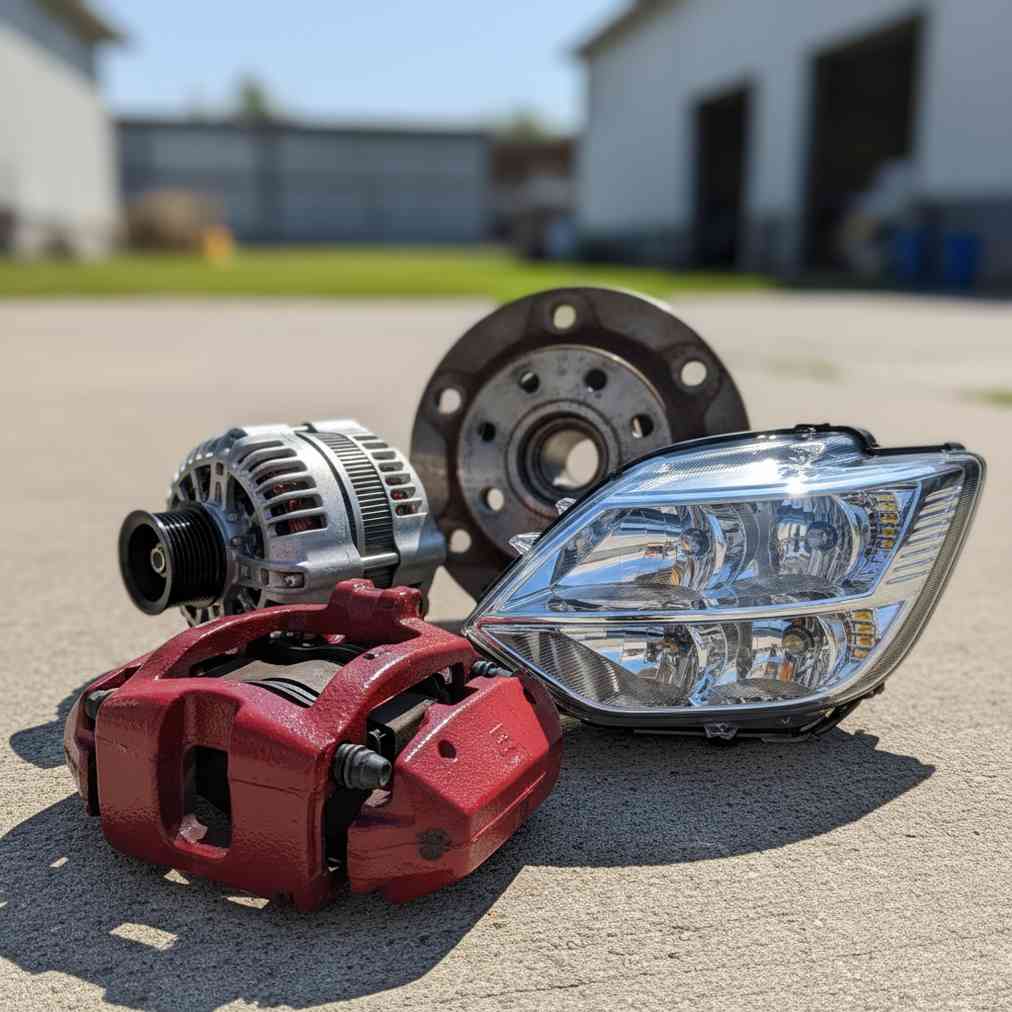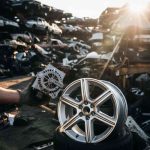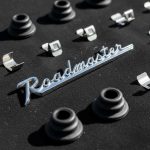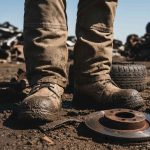Understanding the Three Main Types of Auto Parts
When your vehicle needs repairs, you’ll face a critical decision: which type of replacement parts should you choose? Understanding the differences between OEM (Original Equipment Manufacturer), aftermarket, and used parts can save you hundreds of dollars while ensuring your vehicle’s reliability and safety.
The automotive parts market is vast and complex. In 2022, the North American automotive aftermarket industry reached approximately $439 billion, with the light-duty automotive aftermarket, including used auto parts, accounting for about $341 billion in the USA alone. This massive market offers consumers multiple options for every repair need.
OEM Parts: The Factory Standard
OEM parts are manufactured by the same company that produced the original components for your vehicle when it rolled off the assembly line. These parts are designed to meet exact factory specifications and offer guaranteed compatibility with your specific make and model.
| OEM Parts Advantages | OEM Parts Disadvantages |
|---|---|
| Perfect fit and compatibility guaranteed | Highest cost option (20-60% more expensive) |
| Maintains manufacturer quality standards | Limited availability for older vehicles |
| Backed by manufacturer warranty | No performance upgrade options |
| Preserves vehicle resale value | May require ordering from dealership |
Aftermarket Parts: The Alternative Choice
Aftermarket parts are produced by third-party manufacturers and designed to function similarly to OEM components. While they may vary in design, materials, and quality, they often provide excellent value and sometimes superior performance.
“OEM parts are specifically designed for your car and ensure a perfect fit without modification… Aftermarket parts can be superior in all aspects. They might be designed better, with better material, and improve the vehicle’s performance. But, the trade-off might be that the engine is louder or the ride is a bit rougher.”
| Aftermarket Parts Benefits | Aftermarket Parts Drawbacks |
|---|---|
| Lower cost than OEM parts | Quality varies significantly between brands |
| Wide availability and selection | Potential fitment issues |
| Performance and customization options | Limited or no warranty coverage |
| Competition drives innovation | May trigger diagnostic codes |
The Growing Appeal of Used Auto Parts
Used auto parts represent the most cost-effective option for vehicle repairs, with potential savings of 30% to 70% compared to new components. These salvaged parts are typically OEM components removed from previously owned vehicles, offering original quality at significantly reduced prices.
Key Benefits of Choosing Used Parts
- Maximum Cost Savings: Used parts can save you up to 50% or more compared to new alternatives
- Environmental Sustainability: Reduces waste by reusing functional components and conserving raw materials
- Availability for Older Vehicles: Essential for discontinued models where new parts are scarce or expensive
- OEM Quality: Many used parts are original equipment with substantial remaining lifespan
- Immediate Availability: Often in stock at local junkyards near you, eliminating wait times
The used auto parts market is experiencing significant growth, driven by an aging vehicle fleet, economic factors like high vehicle prices and interest rates, and the increasing popularity of DIY repairs. More consumers are choosing used parts as they maintain existing vehicles longer rather than purchasing new ones.
Comprehensive Used Parts Evaluation Checklist
When considering used parts, thorough inspection is crucial to ensure quality and functionality. Proper evaluation techniques can help you identify reliable components and avoid costly mistakes.
Pre-Purchase Preparation
- Verify Compatibility: Confirm part numbers, vehicle VIN, make, model, and year specifications
- Research Seller Reputation: Check reviews and ratings for salvage yards or online sellers
- Understand Return Policies: Inquire about warranties, return options, and testing periods
- Compare Pricing: Ensure competitive pricing against other used and aftermarket alternatives
Physical Inspection Protocol
| Inspection Category | What to Check | Red Flags |
|---|---|---|
| Physical Damage | Cracks, rust, corrosion, dents | Structural damage, excessive wear |
| Seals and Gaskets | Flexibility, integrity, leak signs | Brittle materials, visible leaks |
| Previous Repairs | Welds, fresh paint, filler material | Poor repair quality, hidden damage |
| Moving Components | Smooth operation, bearing condition | Grinding, resistance, play |
Functionality Testing Guidelines
- Electrical Components: Test with battery power to verify functionality and proper connections
- Mechanical Parts: Check moving components for smooth operation without binding or excessive play
- Engine Components: Inspect for oil leaks, carbon buildup, and proper valve operation
- Suspension Parts: Look for worn bushings, damaged springs, or compromised shock absorbers
- Body Panels: Ensure proper alignment, check for accident damage, and verify mounting points
Documentation and Record Keeping
- Photo Documentation: Take detailed pictures from multiple angles, especially for online purchases
- Part History: Request mileage information and service records from donor vehicle
- Seller Information: Keep contact details, business information, and transaction records
- Warranty Documentation: Preserve any warranty details or return policy information
Market Trends and Industry Insights
The automotive parts industry is experiencing significant shifts that affect consumer choices and availability. Understanding current market dynamics helps consumers make informed decisions about part selection and timing.
Current Market Statistics
- The used auto parts market is projected to continue growing through 2030
- Average vehicle age on American roads is increasing, driving demand for replacement parts
- E-commerce platforms have expanded access to used parts nationwide
- DIY repair trends are boosting aftermarket and used parts sales
- Supply chain disruptions have increased interest in locally sourced used parts
Industry experts note that premium aftermarket brands now often match or exceed OEM quality, particularly in performance segments. This quality improvement has made aftermarket parts increasingly attractive to consumers seeking value without compromising reliability.
Making the Right Choice for Your Vehicle
Selecting between OEM, aftermarket, and used parts depends on several key factors that vary by situation and vehicle needs. Understanding these decision criteria helps ensure optimal outcomes for your specific circumstances.
Decision Matrix for Part Selection
| Situation | Best Choice | Rationale |
|---|---|---|
| New vehicle under warranty | OEM Parts | Maintains warranty coverage and resale value |
| Budget-conscious repair | Used Parts | Maximum cost savings with acceptable quality |
| Performance modification | Aftermarket Parts | Upgrade options not available from OEM |
| Older vehicle (10+ years) | Used or Aftermarket | Cost-effective, OEM may be discontinued |
| Safety-critical components | OEM or Premium Aftermarket | Reliability and performance paramount |
Expert Recommendations
“Contrary to common misconceptions, many used auto parts are in excellent condition and offer reliable performance. Parts are inspected and tested before sale, ensuring that they meet operational standards.”
- For Critical Safety Systems: Prioritize OEM or premium aftermarket parts for brakes, steering, and suspension
- For Cosmetic Repairs: Used parts offer excellent value for body panels, interior components, and trim pieces
- For Older Vehicles: Used OEM parts often provide better value than new aftermarket alternatives
- For Performance Applications: Research aftermarket brands with proven track records and customer reviews
Insurance Considerations and Coverage
Insurance policies significantly influence part selection during collision repairs. Many insurers default to aftermarket parts to control costs, but some policies offer OEM endorsements for customers who prefer original components.
- Standard Policies: Typically cover aftermarket parts for repairs
- OEM Endorsements: Available for additional premium to guarantee original parts
- Used Parts Coverage: Some policies allow used parts for older vehicles
- Deductible Considerations: Part choice can affect out-of-pocket repair costs
Environmental Impact and Sustainability
Choosing used auto parts contributes significantly to environmental sustainability by reducing waste and conserving resources. Recycled auto parts help minimize the environmental footprint of vehicle maintenance while providing economic benefits.
- Waste Reduction: Keeps functional components out of landfills
- Resource Conservation: Reduces demand for new manufacturing and raw materials
- Energy Savings: Eliminates energy required for new part production
- Carbon Footprint: Lowers overall environmental impact of vehicle repairs
Quality Assurance and Testing
Reputable salvage yards and parts suppliers implement quality control measures to ensure used parts meet operational standards. Professional testing and inspection help identify parts with remaining useful life and reliable performance.
Industry Quality Standards
- Visual Inspection: Trained technicians examine parts for damage and wear
- Functional Testing: Electrical and mechanical components undergo operational testing
- Cleaning Protocols: Parts are cleaned and prepared for installation
- Inventory Management: Proper storage prevents deterioration and damage
- Documentation: Part history and condition records maintained for customer reference
Cost-Benefit Analysis Framework
Evaluating the total cost of ownership helps determine the best part choice for your specific situation. Consider not only initial purchase price but also installation costs, reliability, and potential future replacement needs.
| Cost Factor | OEM Parts | Aftermarket Parts | Used Parts |
|---|---|---|---|
| Initial Purchase Price | Highest | Moderate | Lowest |
| Installation Complexity | Standard | May require modification | Standard (if compatible) |
| Warranty Coverage | Comprehensive | Limited | Usually none |
| Expected Lifespan | Full service life | Variable by brand | Reduced remaining life |
When to Avoid Used Parts
While used parts offer excellent value in many situations, certain circumstances warrant avoiding salvaged components. Some parts should never be purchased used due to safety concerns or reliability requirements.
- Safety Systems: Airbags, seat belts, and crash sensors should be replaced with new components
- High-Wear Items: Brake pads, clutches, and timing belts near end of service life
- Sealed Systems: Transmissions and differentials with unknown maintenance history
- Electronic Modules: Engine computers and control units prone to hidden failures
- Structural Components: Frame rails or suspension mounts with potential crash damage
Maximizing Value from Your Parts Purchase
Whether you need to sell a junk car for cash or purchase replacement parts, understanding market dynamics helps optimize your decisions. Strategic timing and sourcing can significantly impact your overall automotive maintenance costs.
Smart Shopping Strategies
- Compare Multiple Sources: Check salvage yards, online marketplaces, and local suppliers
- Consider Bulk Purchases: Buy multiple related parts from same source for better pricing
- Seasonal Timing: Shop during off-peak periods for better selection and prices
- Build Relationships: Develop connections with reputable suppliers for future needs
- Negotiate Wisely: Use market knowledge to negotiate fair prices, especially for multiple items
Future Outlook and Emerging Trends
The automotive parts industry continues evolving with technology advances, changing consumer preferences, and environmental considerations. Understanding these trends helps predict future availability and pricing patterns.
- Electric Vehicle Growth: Increasing demand for EV-specific components and batteries
- Advanced Materials: Lighter, stronger materials requiring specialized handling and installation
- Smart Components: Integration of sensors and electronics in traditional mechanical parts
- 3D Printing: On-demand manufacturing for rare or discontinued components
- Circular Economy: Enhanced focus on remanufacturing and component lifecycle extension
The choice between OEM, aftermarket, and used parts ultimately depends on your specific needs, budget, and vehicle requirements. By understanding the advantages and limitations of each option, conducting thorough inspections, and considering total cost of ownership, you can make informed decisions that balance quality, cost, and reliability. Whether you’re maintaining a daily driver or restoring a classic vehicle, the right parts choice can ensure optimal performance while managing expenses effectively.





Leave a Reply
You must be logged in to post a comment.